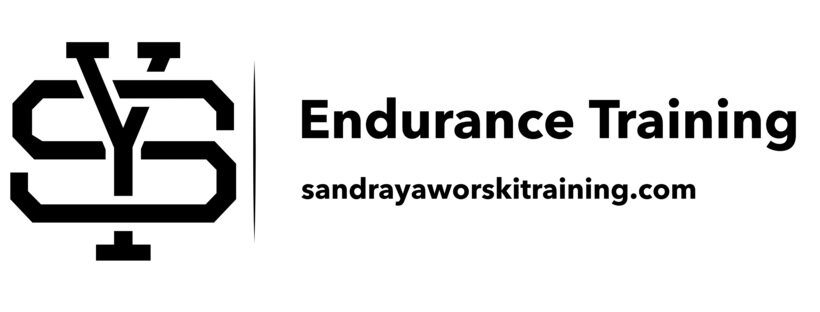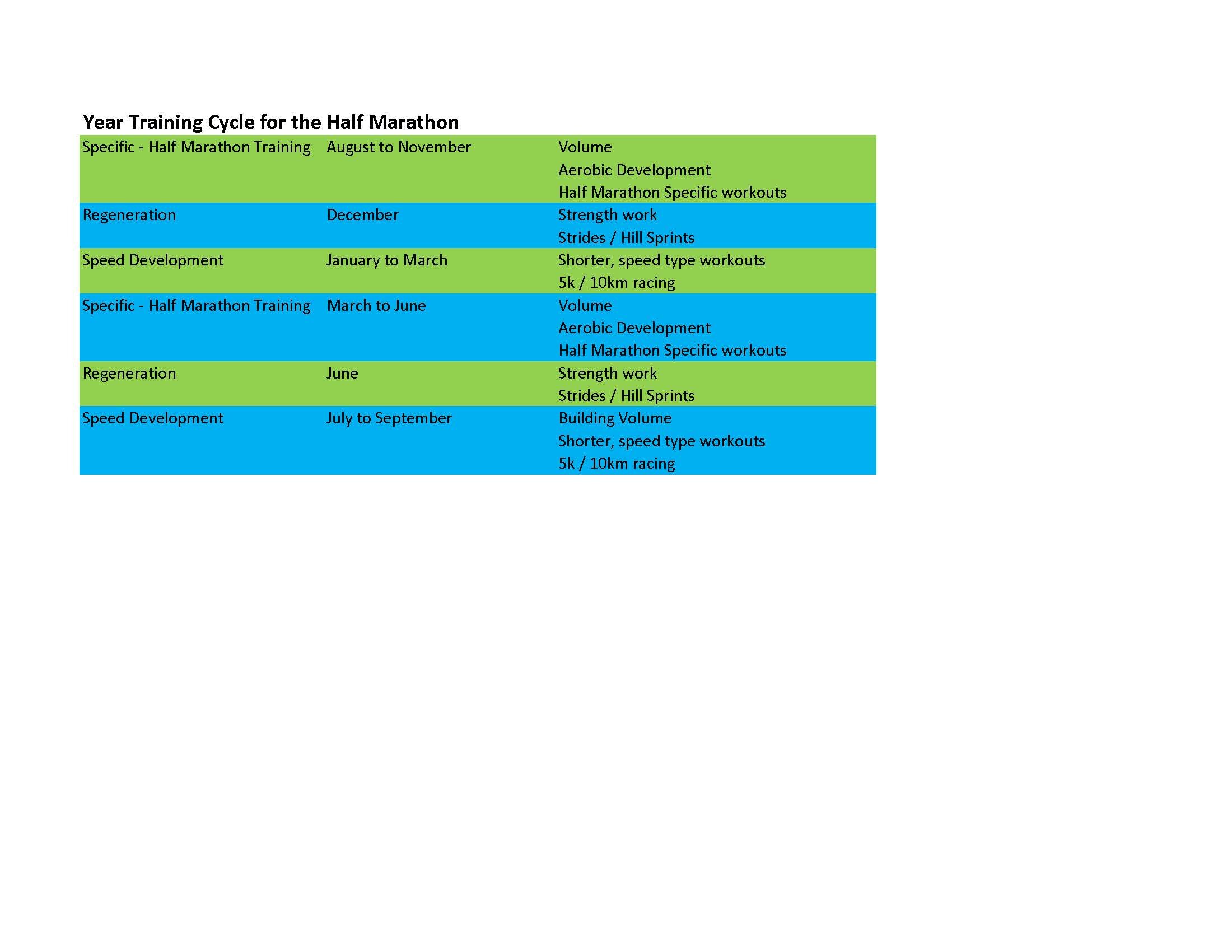Training for only a marathon distance, and neglecting training for shorter distances, often can result in not getting the opportunity to improve your VO2max and running efficiency. This ultimately impacts or limits the ability to improve performance at the marathon distance. Training needs to include a change of stimulus. Without adding a new stimulus, often fitness will decline. It is important to train all energy systems.
My approach, for those more focused on performance at the marathon distance, is to look at things over 18 months to 2 years. Below I outline a typical strategy to achieve this by breaking out the 18 to 24 month period into blocks with specific focus, and addressing the need for training all energy systems and providing new stimulus to make gains.
I also outline the typical approach I take with athletes who are training specifically for the half marathon, and 5k / 10k distances. I break out my blocks over a year for these distances.
Regardless of the distance you run, the key to endurance is our anaerobic threshold. It allows us to run a faster speeds before fatigue and lactic acid begin to take place.
Marathon Performance Plan
Marathon: the main ingredients are aerobic threshold, muscular endurance and fuel efficiency.
Aerobic threshold is the fastest pace you can run while staying aerobic.
Muscular endurance is the ability to hold it together without falling apart.
Fuel efficiency is about how efficient you are at burning fat
Half Marathon Performance Plan
Half marathon: the main ingredients are stamina (lactate threshold and anaerobic threshold), muscular endurance, and speed endurance.
Lactate threshold is the point where lactic acid is just beginning to accumulate.
Anaerobic threshold is the level of exercise intensity at which lactic acid accumulates in the blood stream faster than it can be cleared away.
Muscular endurance is the ability to hold it together without falling apart.
Speed Endurance endurance is your ability to hold a specific pace for an increasingly longer period of time.
5k / 10k Performance Plan
5k / 10k: the main ingredients are VO2max, speed endurance, and running efficiency.
VO2max is the maximum amount of oxygen your body can utilize during exercise.
Speed Endurance endurance is your ability to hold a specific pace for an increasingly longer period of time.
Running efficiency is the ability to recruit maximum muscle fiber with each stride without increasing effort.





